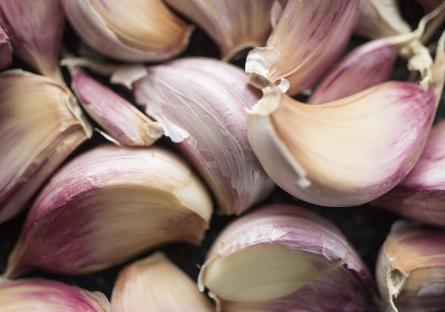
Few vegetables have the magical aura that garlic has. Folklore is full of stories about the protective power of garlic, said to repel both vampires and the evil eye. There are also stories about witches and alchemists and shamans using garlic for their caustic brews, healing their communities with the “juice” of these stinky bulbs. Peel back the fictions surrounding garlic and you find this appetizing core of fact: garlic is good for you! While it may give you a wicked case of troll’s breath, garlic possesses several properties that make it a great healthy addition to your diet. Read on as we break open these cloves and dig deep into the benefits of eating garlic.
A Brief History of Garlic
Garlic has been a staple of human diets and medicine cabinets since antiquity. Anthropologists and historians have found evidence going back to the ancient Egyptians and Greeks that this little bulb-shaped vegetable was often used for medicinal purposes. It was even used as a ‘performance enhancing drug’ during the original Olympics! It was believed that the potency of garlic could endow the athletes with more strength and stamina.
Cultivated around the world, garlic is part of the onion family. Garlic is unique among its onion cousins (which include leeks, chives, and scallions) for being composed of many smaller pieces called cloves. There’s also elephant garlic and wild garlic, which despite their names are actually different kinds of plants—closer to leeks than their shared namesake. This superfood takes about 8-10 months to grow, but the good news is that it takes almost as long for it to go bad. A whole, unpeeled head of garlic can stay good for up to six months!
Smelly Medicine
One thing anyone who’s been around garlic in the kitchen knows is that it has a POWERFUL odor. What’s interesting about that smell is that it’s tied to the very aspect of garlic that makes it so healthy. Garlic produces allicin, a chemical compound that blocks free radicals in our cells and tissue. Garlic also contains several other sulfurous compounds (including diallyl disulfide and s-allyl cysteine) that work in concert with allicin to provide garlic its medicinal properties. Those sulfur compounds are also the culprits behind garlic’s distinctive odor. The smell is actually a strong indicator of how healthy a bulb of garlic is; aged garlic loses its odor but also loses much of its medicinal value. Don’t forget: ‘bad for your nose, good for everything else.”
High In Nutrients, Low In Calories
Part of what makes garlic a superfood is that it’s nutrient-dense while being quite low in calories. Garlic is packed with:
- Vitamin C
- Zinc
- Calcium
- Iron
- Potassium
- Magnesium
- Vitamin E
- Vitamin K
- Fiber
- Selenium
- Vitamin B6
- Manganese
- Protein
Good For Inflammation, Blood Pressure, and Heart Health
In addition to stinking up the joint, garlic’s sulfur compounds have powerful anti-inflammatory properties. The sulfur compounds and antioxidants contained in garlic combat chronic inflammation, which can help lower the risk of developing heart disease, immune conditions, and certain cancers. There have also been studies that found that garlic can also help lower blood pressure.
Feed Your Head
Research has also found that garlic may be good for your brain. The antioxidants in garlic could help reduce the risk of developing Alzheimer's disease and dementia. Oxidative damage from free radicals can be a major factor in causing age-related mental degeneration.
Article by Austin Brietta
Want more wellness tips? Check out these stories: